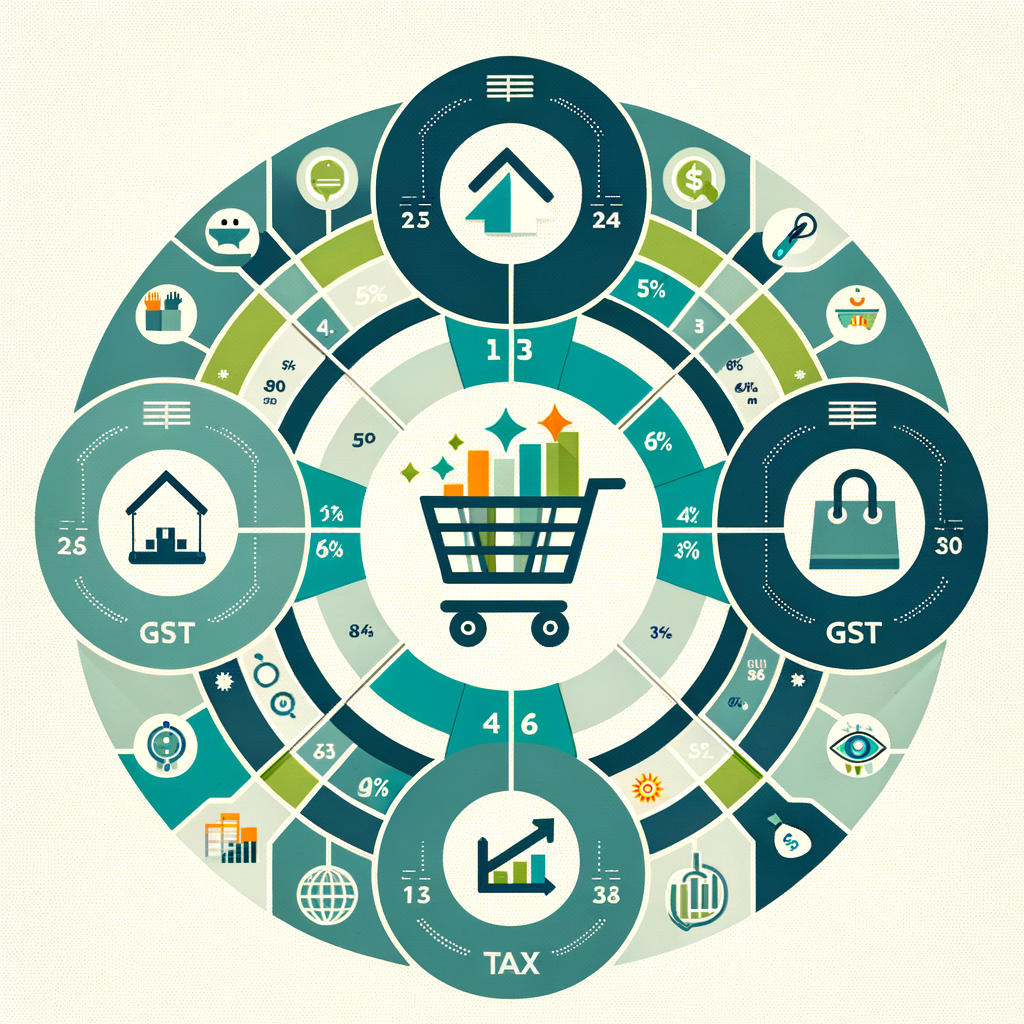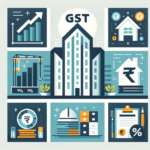GST on Food, Groceries, and Essentials – What’s New in 2025?
Introduction: Why GST on Your Daily Essentials Matters More Than Ever
Even a small change in a tax rate can have a big ripple effect, either tightening a family’s monthly budget or impacting a small business’s bottom line. That’s why understanding the GST on Food Groceries Essentials is more critical than ever. As we step into 2025, staying updated on potential tax changes isn’t just for accountants; it’s for everyone who buys or sells daily necessities. The Goods and Services Tax (GST) directly influences the price of everything from your morning tea to the vegetables you buy for dinner. This comprehensive guide will break down the essential shopping essentials GST facts India wants to know. Whether you are managing household expenses or running a grocery store, this article will provide clear, actionable information on the current GST on food India and what to watch out for in the coming year.
Understanding the Basics of GST on Food Groceries Essentials
Before we dive into the specifics, let’s quickly cover the basics. Goods and Services Tax (GST) is an indirect tax that has replaced many other indirect taxes in India like excise duty, VAT, and services tax. It’s a single tax on the supply of goods and services, right from the manufacturer to the consumer. GST is levied at different rates, which are grouped into slabs: 0% (exempt), 5%, 12%, 18%, and 28%.
The rate applicable to an item often depends on a crucial distinction: whether it is branded/packaged or unbranded/sold loose. Typically, essential food items sold loose are exempt from GST to keep basic necessities affordable. However, the moment they are put in a package and given a brand name, they often attract a 5% GST. Furthermore, when you buy groceries, the bill shows CGST (Central GST) and SGST (State GST), which are split between the Central and State governments. If you buy from a seller in another state, you’ll see IGST (Integrated GST), which is collected by the Central Government. Understanding these fundamentals is key to decoding the food and groceries GST rates India.
GST Rate Breakdown: What’s Taxed and What’s Exempt?
Navigating the different GST rates for food items can be confusing. To simplify this, we’ve broken down common grocery and food items into their respective GST slabs. This will help you understand exactly what you’re paying for.
GST Exempt (0%) Food Items
These are the absolute basics, kept tax-free to ensure they remain affordable for everyone. The key here is that most of these items are unprocessed and sold loose or unbranded. This category is crucial for understanding the base-level GST on groceries India.
- Fresh fruits and vegetables
- Fresh, pasteurized milk (not in tetra packs)
- Curd, Lassi, Buttermilk
- Unbranded atta (wheat flour), maida, and besan (gram flour)
- Eggs, meat, and fish (fresh, not processed or canned)
- Natural honey
- Salt
5% GST Slab: The Common Man’s Tax Bracket
This is arguably the most important slab for household budgets, as it covers most essential packaged food items. When basic staples are packaged and branded, they typically move into this category. The Indian grocery GST implications are most visible here.
- Sugar, tea, and coffee
- Edible oils
- Spices (masalas)
- Packaged paneer (cottage cheese)
- Branded and packaged food grains, cereals, and flours
- Milk powder
- Frozen vegetables
- Mishti/Sweets
12% GST Slab: Processed Foods
This slab includes basic processed foods that are not considered absolute essentials but are common in many households.
- Butter, ghee, and cheese
- Fruit juices (packaged)
- Pickles, sauces, and ketchup
- Sausages and similar processed meat products
- Frozen meat products
- Namkeen and bhujia
18% GST Slab: Luxury and Restaurant Services
This slab covers more indulgent and highly processed food items, as well as services related to food.
- Chocolates and cocoa powder
- Pastries, cakes, and biscuits
- Instant food mixes and soups
- Ice cream
- Mineral water
- Restaurant Services: It’s important to note that dining at most restaurants (both AC and non-AC) attracts a 5% GST. However, restaurants cannot claim Input Tax Credit on this. The 18% slab applies to services from restaurants located within hotels with room tariffs of ₹7,500 or more.
Key GST Updates for Essentials India: What to Expect in 2025
Disclaimer: The following points are based on discussions from GST Council meetings, expert analysis, and industry news. They are indicative of potential changes and should not be considered final. Always refer to official notifications from the GST Council for confirmed rules.
The GST framework is dynamic, and the government periodically revises rates and rules based on a variety of economic needs. As we look towards 2025, several discussions are underway that could impact the food and grocery sector. Here’s what you need to keep an eye on.
Anticipated Rate Revisions: 2025 GST Changes Food Basics
One of the most talked-about topics is the potential restructuring of GST slabs. The GST Council has been considering rationalizing the rates to simplify the tax structure and increase revenue.
- Potential for Rate Hikes: There are ongoing discussions about moving some items from the 5% slab to a new 7% or 8% slab. If implemented, this would directly increase the cost of packaged essentials like sugar, tea, and edible oils.
- Bringing Exempt Items into the Tax Net: To widen the tax base, there have been proposals to bring some currently exempt, pre-packaged, and labelled items into the 3% or 5% GST slab. This could affect items like unbranded but packaged atta, dal, and rice.
- Clarity on Classification: Expect more circulars and notifications providing clarity on the classification and HSN codes for specific food products, especially those that fall on the borderline between two tax slabs.
New Compliance Rules for Small Grocery Businesses
The government is continuously tightening compliance to curb tax evasion. Small business owners, like kirana stores and food suppliers, must stay alert.
- E-invoicing Thresholds: The threshold for mandatory e-invoicing has been progressively lowered. It’s possible that in 2025, the threshold could be reduced further, bringing more small and medium-sized grocery suppliers into its ambit.
- Stricter HSN Code Requirements: Businesses may be required to use more detailed (6-digit or 8-digit) HSN codes on their invoices, which helps in precise tax assessment but requires more diligence from business owners.
Impact of Technology on GST Filing
Technology is at the heart of GST compliance. The GST Network (GSTN) is constantly upgrading the official portal to make filing easier and more transparent.
- Automated Scrutiny: Expect enhanced data analytics and AI-driven tools on the GST Portal to automatically flag mismatches in returns, especially between GSTR-1, GSTR-3B, and e-way bills.
- Improved User Interface: The portal may see further improvements to simplify the filing process for small businesses who may not have dedicated accounting teams.
How GST Changes Impact You: A Look at Both Sides
Any change in GST rates or rules has a direct, tangible effect. Let’s examine how these potential shifts could impact individuals and small businesses.
For Salaried Individuals & Households
For the average household, GST changes translate directly into the monthly grocery bill. A seemingly small percentage change can add up significantly over a year.
- Budget Impact: Let’s take a simple example. If a family spends ₹15,000 a month on groceries, with about ₹10,000 of that on items in the 5% GST slab, that’s a tax of ₹500. If the rate for these items is increased to 7%, the tax becomes ₹700, an increase of ₹200 per month or ₹2,400 per year.
- Consumer Behaviour: Significant price changes might lead consumers to shift from branded, packaged goods to loose items to save on costs. Understanding these shopping essentials GST facts India can help families make more informed purchasing decisions.
For Small Business Owners (Kirana Stores, Restaurants)
For small businesses in the food sector, the Indian grocery GST implications are more complex. They need to manage pricing, compliance, and cash flow, which has a significant Impact of GST on Small and Medium Enterprises.
- Input Tax Credit (ITC): Any increase in GST on raw materials will increase the purchase cost for a business. However, they can claim this additional GST as ITC, so their final liability may not change. The key is Maintaining Accurate Accounting Records for Tax Purposes.
- Pricing and Competition: Businesses must decide whether to absorb the cost of a tax hike or pass it on to consumers. In a competitive market, this is a tough decision that can affect sales.
- Compliance Burden: Every rate change requires updating accounting software, retraining staff, and ensuring all invoices reflect the new rates. This is where getting expert essentials GST guidance 2025 becomes invaluable.
Conclusion: Staying Ahead of GST Changes with TaxRobo
The world of GST is constantly evolving. For both households and businesses, staying informed about the GST on Food Groceries Essentials is not just good practice—it’s essential for financial planning and stability. Understanding the basic slabs, keeping an eye on the potential 2025 GST changes food basics, and knowing how these shifts can impact your wallet or your business operations is the first step toward smart financial management. As compliance becomes more technology-driven and rules become more nuanced, navigating the system can be challenging.
Whether you’re a small business owner needing help with GST filing and compliance or an individual looking for tax planning advice, TaxRobo’s experts are here to help. Contact us today for a consultation and let us simplify your tax journey!
Frequently Asked Questions (FAQs)
Q1. Is there any GST on fresh milk and atta (flour) in India?
A: No, fresh milk and unbranded, unpacked atta are generally exempt from GST (0% rate). However, if they are packaged and branded (for instance, packaged in a tetra pack or a branded bag of flour), they may fall under the 5% GST slab.
Q2. How is the GST on food I buy from a grocery store different from the GST at a restaurant?
A: GST on groceries depends on the item’s specific rate (0%, 5%, 12%, etc.). Restaurant services (both dine-in and takeaway) are typically charged a flat 5% GST. The key difference is that restaurants providing this service cannot claim Input Tax Credit (ITC) on their raw materials and other expenses.
Q3. As a small kirana store owner, how can I easily manage these different GST rates?
A: The best way is to use a reliable accounting and billing software that automatically categorizes products by HSN code and applies the correct GST rate. This simplifies invoicing, inventory management, and filing returns accurately and on time. Learning how to Set Up An Accounting System for My Small Business is a crucial step. TaxRobo can help you set up and manage this system efficiently.
Q4. Where can I find the official and most updated list of food and groceries GST rates India?
A: The most reliable and official source is the Central Board of Indirect Taxes and Customs (CBIC) website. They publish all official notifications, circulars, and updated rate schedules. You can find this information on their GST page.



